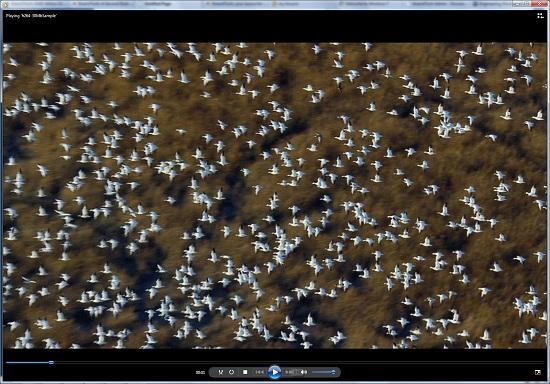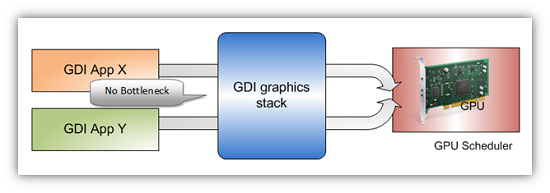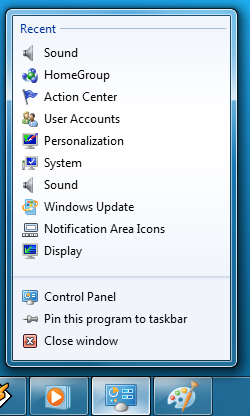Windows 7 Performance Guide
by Ryan Smith and Gary Key on October 26, 2009 12:00 AM EST- Posted in
- Systems
Feature Recap
As we have already covered the bulk of Windows 7’s new features in our look at the Windows 7 Release Candidate, we’re not going to spend too much time here. If you want an in-depth look at the new features, please see that article.
Performance
Vista’s performance was something of a quagmire. Even after SP1 fixed its biggest issues, it continued to be rather RAM hungry and poorly suited for low-end computers and newly minted cheap computers with the performance of older low-end computers. Netbooks made this situation particularly problematic for Microsoft, as their limited performance amplified this issue and resulted in netbooks shipping with Windows XP almost exclusively.
For Windows 7, Windows has been put on a diet in order to perform better on those machines. The most noticeable changes here are that Windows 7 eats less RAM and hard drive space out of the box than a comparable version of Vista did. There have also been some underlying tweaks to SuperFetch (it’s less aggressive on startup) and the kernel to improve responsiveness.
Our own experience here is that Microsoft has come through on this, although whether it’s enough is going to depend on just what someone is looking for. We have a few laptops where Vista was an absolute slug while Win7 runs just as well as Windows normally does. For someone looking for Win7 to perfectly replicate XP’s performance however, they’re going to come away disappointed – you’re never going to stuff something like Windows 7 in to the performance characteristics of an 8 year-old OS that forgoes real security and predates wireless networking.
Also while these changes should percolate to higher-end computers, the impact will be marginal at best. Vista had enough going on that it could bog-down low-end hardware, but hardware that as already capable of running Vista well isn’t going to greatly benefit from changes made to squeeze more out of the low-end. We’ll see this in detail later with our benchmarks.
Media
Windows’ media capabilities have been greatly augmented with Windows 7, primarily through the inclusion of decode and encode capabilities for a number of video and audio formats. While Vista included support for MPEG-2/1 and WMV9 video, Win7 has added support for much more contemporary codecs: H.264 and MPEG-4 (A)SP. Audio support has seen the inclusion of support for AAC and AAC+ audio, commonly found as companion audio streams for H.264 video, streaming internet radio, and portable media players.

Windows Media Player playing a 30Mb H.264 clip entirely in software without breaking a sweat
This gives Windows 7 the ability to play just about everything entirely out of the box, forging the need to deal with codec hell. The only notable things missing here are support for BluRay playback (you’ll need separate software), and some media container types (OGG, Matroska, MOV).
Encode support has been added for H.264 video and AAC audio through the Media Foundation Transcode class. This gives Win7 the ability to encode video on the fly for loading media on to portable media players and streaming to other devices (e.g. DLNA). However the use of this feature is quite limited at this time; only a handful of media players support the level of integration with Windows required to use the encoder. iPods need not apply.
Meanwhile Windows Media Center has seen its own improvements on top of the benefits it derives from greater codec support. At a high level this is a general UI touchup. At a low level this includes adding support for ClearQAM cable tuners, and the user-installation of CableCARD tuners.
Graphics
Windows 7 also brings about some additions to graphics capabilities. The headliner here is DirectX 11, whose introduction is being timed with the launch of Windows 7. DX11 is being released on Vista too any day now, so this is by no means an exclusive feature, but given the timing, it’s one of importance. We’ve already seen AMD launching their 5700 series and 5800 series ahead of Windows 7, so that they can have DX11-supporting cards on the shelves for this launch.
Windows 7-specific changes include the addition of WDDM 1.1, which is a minor update to the video driver stack for better memory utilization. This is accomplished by keeping the texture for a window (when using Aero for desktop composition) solely in VRAM instead of keeping a copy in local system memory too. WDDM 1.1 also brings support for heterogeneous display adapters, something Vista took away.
The GDI graphics stack has also been tweaked for performance reasons. Previously only a single application could write to it at once, making GDI writes a bottleneck. The stack has been changed so that now it’s the responsibility of the GPU to schedule multiple writes, rather than having an application blocked. We haven’t been able to find any performance cases where this is of help, however.

Images courtesy Microsoft
Low-Level
While Windows 7 is not the sizable overhaul of Windows that Vista was, it still has a few low-level changes. The biggest change for users is the official support for the TRIM command for SSDs, which will improve SSD write performance without the need for manual refreshes. The kernel’s dispatcher lock has also been rebuilt for better scaling; previously it effective topped out at 32 cores, now it scales to 256 cores. This will be more felt on the server branch, Windows Server 2008 R2.
Windows XP Mode
Primarily targeted at business users, Microsoft has officially added a derivative of their VirtualPC virtualization technology to Windows 7 in the form of Windows XP Mode. Windows XP Mode is a pre-configured Windows XP Pro virtual machine for running applications that just won’t run natively under Win7, allowing businesses to half-step to Windows 7 as part of a longer transition. It comes as a separate download available for Win7 Professional and higher editions, and no, it doesn’t run games.
Interface
The bulk of the changes in Windows 7 are going to be things that you can see, literally. Various interface elements have received drastic overhauls, and at the risk of slighting all of the other groups at Microsoft, more work appears to have been put in here than anywhere else.
Chief among these is the near-total replacement of the taskbar. The new Win7 taskbar is much closer to Mac OS X’s dock in appearance and function. Active applications appear on the taskbar as just large(r) versions of their application icon, and icons can be pinned in place so that they can be launched from the taskbar in the future, not unlike the old Quick Links feature. Undoubtedly, this is going to be the hardest thing for new users to get used to, although it’s certainly not hard to grow accustomed to.

The Control Panel Jump List
Along-side the dock taskbar are jump lists, which are replacing the normal right-click menu for items in the taskbar. Jump lists contain application specific commands, standard window manipulation commands, and recently used files for the application in question. Applications need to be coded to make full use of jump lists.
Also added are a pair of new Aero gestures. Aero Snap causes an application to be maximized when it’s dragged to the very edge of a screen, and returned to normal when dragged away. Aero Shake minimizes all other windows when a window has been shaken. Microsoft’s Rolodex-wannabe Flip3D is still here, much to our chagrin.
Other notable changes include gadgets, which have been liberated from the sidebar in order to reside on the desktop, and the classic Start Menu, which has been terminated entirely in favor of the Vista (and later) Start Menu. Finally, the whole default color scheme of Windows has been redone; pea green is out, blue/grey is in.
UAC
Finally, User Account Control, the fundamental underpinningsof Vista’s enhanced security, has also seen an overhaul. By reducing the integrity of UAC slightly so that by default it auto-elevates signed Microsoft programs, Microsoft hopes to reduce the perceived annoyance of UAC without compromising the actual security. As a result, UAC should be less noticeable, particularly when first setting up a computer. However there are possible security consequences of this, which we’ll get in to later











207 Comments
View All Comments
Tewt - Monday, November 2, 2009 - link
Toms pretty much had the same conclusion as Anandtech. Here is a quote from their conclusion:"From the benchmarker’s standpoint, the change from Windows Vista to Windows 7 is simply a matter of documentation."
I wish someone would quantify the "snappy" feeling or the "it feels faster" they get from Windows 7 because I'm not seeing a compelling reason to move from Vista from either article on the two sites.
werfu - Monday, October 26, 2009 - link
I absolutely love Win7. I've installed the RC on my Thinkpad T61p and it's a real pleasure to use it compared to Vista. It's more responsive, not like Vista sluggish experience. However, the ACPI driver for the T61p don't work right. The screen doesn't dim and power management don't work right. I think that's really odd, as it's been working right under Vista and Linux.Also, I wonder if the NAS test was done using a Large Packet enabled NAS. It do make a huge difference on networking gear that support it.
strikeback03 - Monday, October 26, 2009 - link
Have you checked for updated drivers recently? Lenovo had a bunch of Win7 drivers for my T43 which were all dated within the past week.7Enigma - Monday, October 26, 2009 - link
Did you happen to do any benchmarking or "general user responsiveness" when you upgraded the systems? I have upgraded 3 systems since Windows 95 and in every case I ended up reformatting and doing a clean install; not because of a hardware/software issue, but rather because some unknown demon made the systems chug.I've seen this same issue with the move from XP SP2 to SP3 on my dad's computer (in this case to the point where we actually rolled back to SP2). In that instance it is possible the extra security features/etc. on an older system that just couldn't take it, but in the other instances it seemed to be a major problem.
Any comments by the authors would be greatly appreciated.
Ryan Smith - Monday, October 26, 2009 - link
One of the systems that I did the upgrade install on was my personal system. I'm not going to publish any numbers since they aren't rigorous enough, but before and after testing didn't reveal any differences in performance. It continues to perform just as well as any other Win7 system I have.7Enigma - Tuesday, October 27, 2009 - link
Thank you for the response Ryan. Honestly while the articles are fantastic, it is the timely comments from the authors that make this site the best.Postoasted - Monday, October 26, 2009 - link
Had been using XP64 for about 4 years and lived through all its teething problems. Had been totally satisfied except that with some programs it couldn't regulate the RAM efficiently. I have 6 gigs of RAM and would ofter run out while using some apps. With 7 Ultimate I can watch an H264 movie, have FF open and encode a movie all at the same time and have RAM left over. For me Windows 7 was the fix.nafhan - Monday, October 26, 2009 - link
I'll go out on a limb and say that anyone who feels comfortable configuring POP3/SMTP settings would also be comfortable downloading the free mail client from MS (or Thunderbird, etc.). Businesses will likely have MS Office installed (including Outlook). Non-technical users generally use webmail.So, the only group I can come up with who would want it installed by default is tech-savvy users without Office, that prefer MS's free desktop client over webmail, and don't have admin rights to install it themselves or access to IT support to install it for them.
jay401 - Monday, October 26, 2009 - link
Gary - Whatever happened to the P55 motherboard reviews and round-up articles you mentioned last month? Are they still on the way? I think we've seen 3 or 4 P55 motherboards reviewed so far at Anandtech. Are you still going to review the others?It's not so much the performance that's important or unknown, since they're all relatively similar. It's the technical specs comparisons, the board layout images and commentary, any issues you experienced while testing with them, etc. Would love to see the round-ups.
Gary Key - Monday, October 26, 2009 - link
They are coming shortly. We went back and purchased 8 retail boards to do additional testing on the Foxconn socket compared to the Lotes/Tyco Amp. I have finished that testing and guess what, no changes on air or water, plus it appears the revised Foxconn socket is certainly working better, not perfect, but much better.